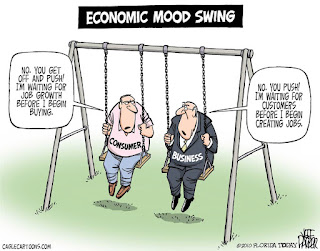There has been all sorts of media, companies and individuals pushing methods of "getting rich in the stock market". The proposed strategies range from stock picking to trading, all the way out to using esoteric long/short hedging strategies with options & futures.
The reality is that there is only one
guaranteed method to get rich in the stock market. It involves time, diversification, low-cost funds, continuous investment, and patience.
1) Time
The first factor is time; you will need to be focused on the long term. Success in the stock market is not based on the next quarter or year, but the expectation for results over long periods of time akin to decades.
2) Diversification
It is important to be properly diversified based on your investment objectives, accepted risk tolerance, and time frames. You should be diversified across domestic stocks, international stocks, growth/income, and company size. The is also need for a balance between stocks, bonds, and other investments based on your age and objectives. There are many articles available that discuss proper diversification including -
Why Diversification Is Important in Investing.
My earlier thoughts on 401K diversification can be found here -
https://www.gregboop.com/2007/02/portfolio-diversification-401k.html
3) Low-cost Funds
Investment costs such as mutual fund fees can eat into a good portion of your returns over time. Funds with high fees don't offer better returns over time than index funds -- in fact many times their returns are worse than index funds. It is best to find mutual funds that mirror indexes offered from funds families such an Vanguard, Fidelity, and Schwab. Mutual Fund marketing fees, front end load fees, back end load fee and other assorted fees merely make financial people rich -- they don't help you are all.
4) Continuous Investment
The market goes through many cycles. By investing regularly - for example adding money each paycheck to a 401K or IRA - you are riding the cycle. When the market pulls back you are buying more at lower cost; when the market rises you are making solid returns on what you have purchased over time. Continuous investment provides a safety cushion for market cycles; it is a much better strategy than simply purchasing funds at one point in time. If you buy at the peak with all of your cash it is a harder climb to get solid investment returns.
5) Patience
Be willing to hold on an ride out market cycles. Do not panic when the market goes down. Do not take a lot of money out simply because the market is up (trying to time the market). You need to have a long term view and be patient. Getting "rich" in the stock market is a long term "play" not something that happens by next year.

